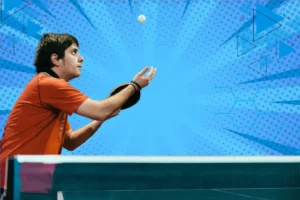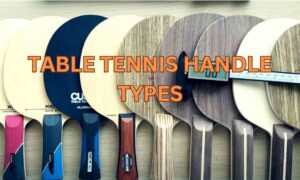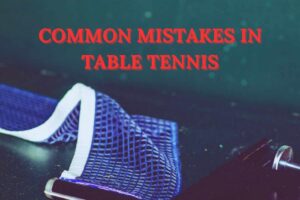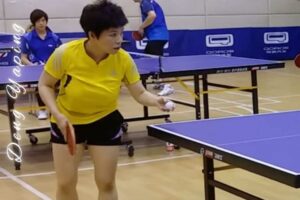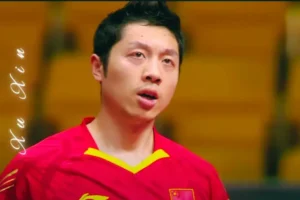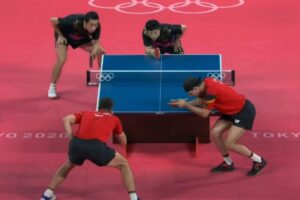Welcome to the dynamic world of Para Table Tennis, where athleticism and adaptability take center stage. In this comprehensive guide, we’ll navigate through the intricate rules and regulations that govern this captivating sport. Whether you’re a passionate table tennis enthusiast, an aspiring player, or simply curious about Paralympic games, we’ve got you covered.
Our mission is clear: to break down the complexities of Para Table Tennis rules in a way that’s easy to understand, engaging, and trustworthy. We’ll explore the synergy of ITTF (International Table Tennis Federation) and Paralympic regulations to ensure you have a comprehensive grasp of the game. Get ready to unravel the secrets of Para Table Tennis and take your knowledge to the next level.
Overview of Para Table Tennis:
Para Table Tennis, also known as Paralympic Table Tennis, is a dynamic and inclusive sport that celebrates athleticism in a unique way. It’s a game where players of all abilities come together to compete, showcasing their remarkable skills on the table.
The primary goal of Para Table Tennis is to ensure that individuals with disabilities can enjoy the sport to the fullest. It adapts to the unique needs of each player, making it accessible and competitive for all. Unlike traditional table tennis, where players compete in standing positions, Para Table Tennis has various classifications, including sitting and standing categories.
The key objectives are to promote inclusivity, create equal opportunities, and provide a platform for athletes with disabilities to excel. This adaptive sport thrives on diversity, embracing the beauty of differences while emphasizing the shared love for the game.
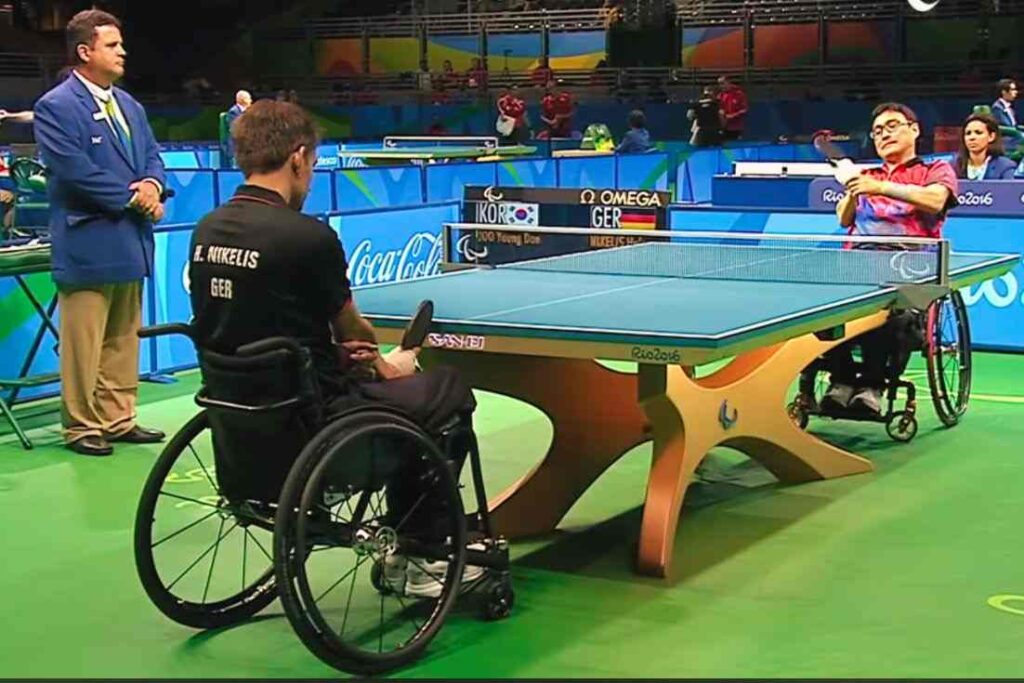
Classification in Para Table Tennis
Para Table Tennis uses meticulous classification rules to categorize players based on their disabilities. This system ensures that each competitor can showcase their skills without being hindered by their impairments.
Players are classified into various classes, from Class 1 (for those with significant impairments) to Class 11 (minimal impairments). Each class accommodates specific disabilities, guaranteeing equitable competition.
Para Table Tennis is a sport where talent knows no boundaries. The classification system’s beauty lies in its functional ability to provide every athlete with a fair chance to excel, embodying the spirit of diversity and equal opportunity.
Eligible Equipment and Court in Para Table Tennis
Para Table Tennis players use adaptive rackets tailored to their individual needs. These rackets can feature extended handles or specialized grips to accommodate players with limited hand mobility. For wheelchair users, the choice of a suitable sports chair is crucial. Wheelchairs are adapted based on the player’s classification, ensuring optimal balance and maneuverability.
The table tennis court for Para players follows the same dimensions and specifications as standard table tennis. The table measures 2.74 meters in length, 1.525 meters in width, and 0.76 meters in height. The net’s height remains consistent at 15.25 centimeters. These specifications guarantee that Para Table Tennis players experience the same court size and dynamics as able-bodied competitors, ensuring fair and competitive matches.
Para Table Tennis Rules in Serving
Serving in Para Table Tennis adheres to some key regulations. The ball must be tossed at least 16 centimeters vertically, ensuring it reaches a visible height before serving. The serve must make contact with the server’s side of the table first, then bounce over the net to the opponent’s side. Additionally, the service area is defined by the table’s end lines and sidelines, and the serve must land within this designated area.
Para Table Tennis rules in serving follow the same principles as conventional table tennis. However, to accommodate athletes with various physical disabilities, some adaptations may be made to accommodate their specific needs. These modifications ensure that all athletes, regardless of their abilities, can participate in and enjoy the sport.
Also See: Ping Pong Serving Rules
Scoring System:
In Para Table Tennis rules, games are played in sets, and the scoring method aligns with the standard table tennis rules. Each game is played to 11 points, with each player earning a point on their serve. However, in case of a deuce (10-10), the game continues until one player gains a two-point advantage. Para Table Tennis players adhere to the same scoring principles as conventional table tennis.
To win a match in Para Table Tennis, a player must secure the majority of sets in a best-of series. Each standard match consists of five sets, and the player who first wins three sets is declared the winner of the match. This system ensures fair competition and a level playing field for athletes of all abilities.
Compete with Playing Rules and Techniques:
Para Table Tennis incorporates many standard table tennis rules. However, adaptive techniques are essential, especially for players with physical disabilities. Techniques like adaptive footwork and grip modifications are common. Athletes often customize their playing style to maximize their strengths.
To excel in Para Table Tennis, athletes can focus on honing their skills and strategy. Maintaining excellent hand-eye coordination, mastering spin techniques, and working on efficient footwork are crucial. Understanding your opponent’s strengths and weaknesses is vital for strategic play. Continuous practice and mental resilience play a significant role in excelling in the sport.
Common Fouls and How to Avoid Them in Para-Table Tennis
In para table tennis, understanding and adhering to the para table tennis rules is essential to maintain fair and competitive gameplay. Here are some common fouls and tips on how to avoid them:
1. Service Violations: One of the most frequent fouls is incorrect serving. To avoid this, ensure the ball is thrown vertically at least six inches, and it must be visible to your opponent throughout the serve.
2. Failure to Allow Bounce: Another violation is attempting to return the ball before it bounces on your side. Wait for the ball to bounce on your side before returning it.
3. Footwork Errors: Footwork fouls may occur, especially for players with mobility challenges. To avoid this, practice adaptive footwork and wheelchair movements to ensure you are in the right position during play.
4. Boosting the Rubber: Boosting the rubber on the racket is not allowed. Avoid using substances to enhance your racket’s performance.
5. Hiding the Ball: During the serve, avoid hiding the ball from your opponent. Keep it visible to ensure fair serve.
By staying informed about these common fouls and practicing proper techniques, para table tennis players can ensure fair play and enjoy the sport while adhering to the rules and regulations.
Strategies for Success Playing Para Table Tennis:
Para Table Tennis combines both skill and strategy to achieve success on the table. Understanding para table tennis rules and avoiding common fouls is pivotal. Here are strategies for success in Para Table Tennis:
2. Training and Practice: Consistent practice is essential. Focus on perfecting your serves, returns, and footwork. Adapt your training to accommodate your specific needs and abilities.
3. Adaptability: In Para Table Tennis, players come from diverse backgrounds and abilities. Be adaptable in your approach to account for different playing styles and strategies. Versatility can be your advantage.
4. Mental Toughness: Developing mental resilience is critical. Stay focused, remain calm under pressure, and strategize effectively during a match.
5. Learn from Others: Observe and learn from experienced players. Study their techniques, positioning, and tactics. Emulate what works for you.
Incorporating these strategies, Para Table Tennis players can not only avoid common fouls but also enhance their overall performance, making the sport an enjoyable and competitive experience for all participants.
In Closing
In conclusion, a deep understanding of Para Table Tennis Rules is the cornerstone of success in this dynamic sport. The rules not only guide the gameplay but also ensure fairness and inclusivity for athletes of all abilities. By adhering to the regulations set by organizations like ITTF and Paralympic, players, classified into various standing classes based on their abilities, can compete on a level playing field.
These classifications may require slight modifications to equipment or strategies to accommodate the athlete’s unique needs. This ensures that victory is determined by skill, strategy, and determination, rather than any advantages. Grasping the rules and their impact on each classifier’s experience is your key to becoming a part of the inspiring world of Para Table Tennis, where every player, regardless of their abilities, can shine as a receiver of the sport’s boundless spirit.


